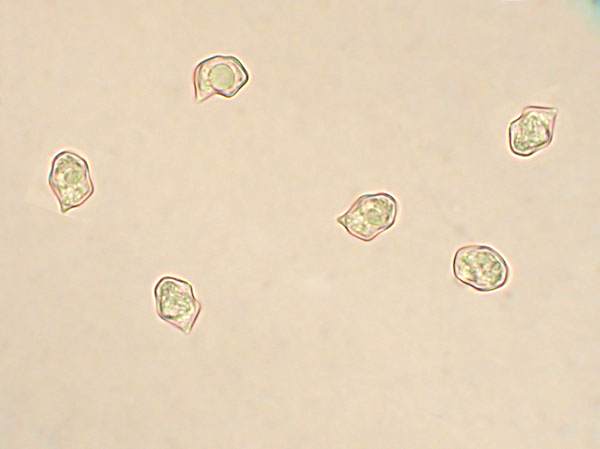Entoloma griseocyaneum (Fr.) P. Kumm. - Felted Pinkgill
Phylum: Basidiomycota - Class: Agaricomycetes - Order: Agaricales - Family: Entolomataceae
Distribution - Taxonomic History - Etymology - Identification - Culinary Notes - Reference Sources
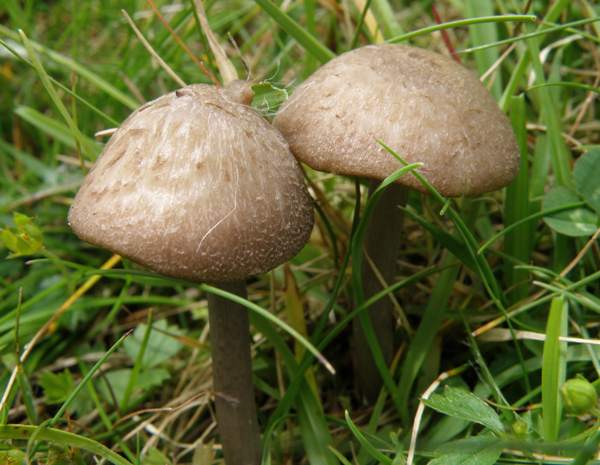
While the majority of grassland pinkgills have caps that flatten, Entoloma griseocyaneum is an exception. Its finely scaly cap is initially bell-shaped but, while expanding to become broadly convex, it does not flatten or become noticeably umbonate as many other grey-brown pinkgills do.
Once you have found a few of these uncommon but quite distinctive little mushrooms you may feel confident enough to base your identification on macroscopic characters alone.
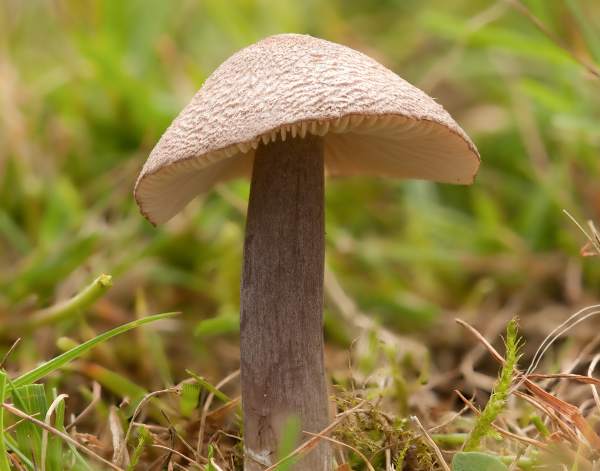
Distribution
In Britain and Ireland The Felted Pinkgill is a fairly common sight on unimproved upland acid grassland. This pinkgill occurs throughout most of northern and central mainland Europe
Taxonomic history
The basionym of this species was defined when, in 1818 the great Swedish mycologist Elias Magnus Fries described this species scientifically and gave it the binomial name Agaricus griseocyaneus. (In the early days of fungal taxonomy most of the gilled mushrooms were included initially in the genus Agaricus, since greatly reduced by the transfer of most of its contents to other newer genera.)
It was German mycologist Paul Kummer who, in 1871, transferred this species to its present genus, thereby creating its current scientific name Entoloma griseocyaneum.
Synonyms of Entoloma griseocyaneum include Agaricus griseocyaneus Fr., Rhodophyllus griseocyaneus (Fr.) Quél., and Leptonia griseocyanea (Fr.) P. D. Orton.
Etymology
The generic name Entoloma comes from ancient Greek words entos, meaning inner, and lóma, meaning a fringe or a hem. It is a reference to the inrolled margins of many of the mushrooms in this genus.
The specific epithet griseocyaneum means greyish deep (or dark) blue.
Identification guide
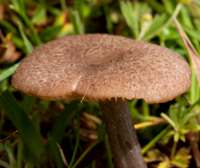 |
Cap2 to 3cm across; initially conical, expanding to become broadly convex; fibrous and scaly, the scales being smaller near to the margin. |
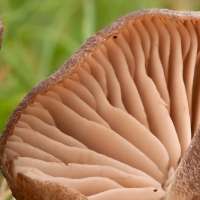 |
GillsAdnate or emarginate; fairly distant; whitish at first becoming pink (as shown on the right) at maturity. Stem4 to 10cm long and 3 to 7mm diameter; blue-grey with longitudinal silvery surface fibrils, paler towards base; fibrous; cylindrical; no stem ring. |
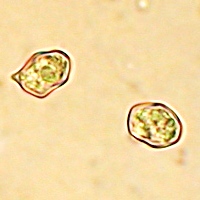 |
SporesIrregular with usually six blunt angles, 9-13.5 x 6.5-8μm. Spore printPink. |
Odour/taste |
Not distinctive. |
Habitat & Ecological role |
Saprobic, on grassland, most often in upland sheep-grazed pastures. |
Season |
Fruiting from summer to late autumn. |
Similar species |
The Wood Pinkgill, Entoloma rhodopolium, is similar in cap colour, although the surface is smooth and silky; it is a woodland species whereas the Felted Pinkgill occurs in grassland. |
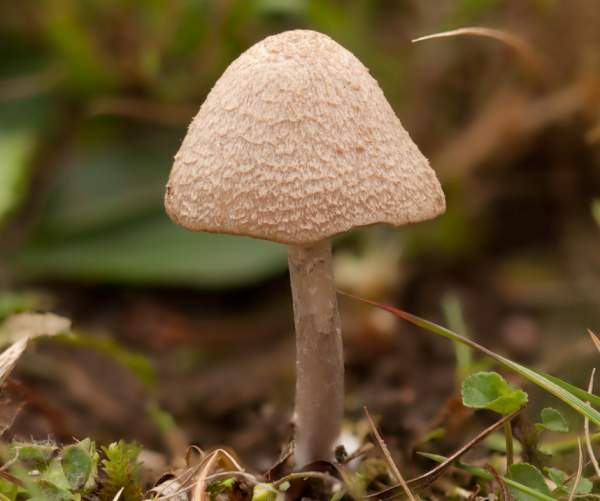
Culinary Notes
Reported in some field guides to be inedible and in others as poisonous, Entoloma griseocyaneum is definitely not one for the pot. (Some Entoloma species - for example Entoloma sinuatum - are known to be deadly poisonous.).
Reference Sources
Fascinated by Fungi, 2nd Edition, Pat O'Reilly 2016, reprinted by Coch-y-bonddu Books in 2022.
Knudsen H., Vesterholt J. (eds) Funga Nordica: agaricoid, boletoid and cyphelloid genera - Nordsvamp, 2008
Dictionary of the Fungi; Paul M. Kirk, Paul F. Cannon, David W. Minter and J. A. Stalpers; CABI, 2008
British Mycological Society (2010). English Names for Fungi
Taxonomic history and synonym information on these pages is drawn from many sources but in particular from the British Mycological Society's GB Checklist of Fungi.
Acknowledgements
This page includes pictures kindly contribted by David Kelly.
Fascinated by Fungi. Back by popular demand, Pat O'Reilly's best-selling 450-page hardback book is available now. The latest second edition was republished with a sparkling new cover design in September 2022 by Coch-y-Bonddu Books. Full details and copies are available from the publisher's online bookshop...
